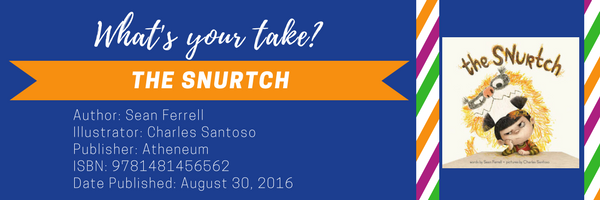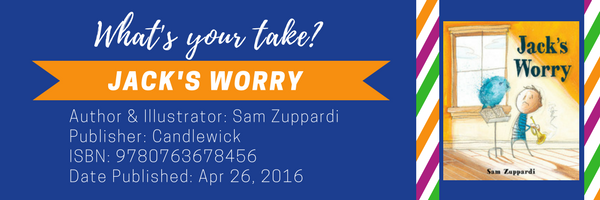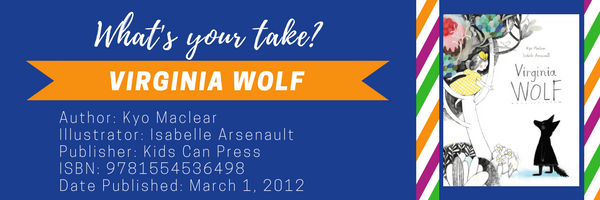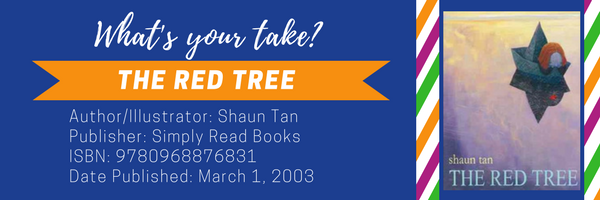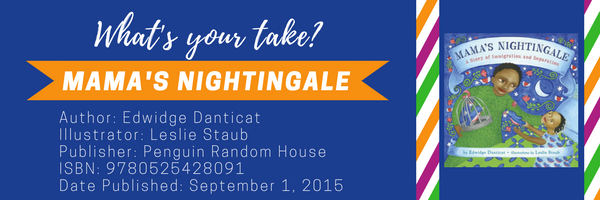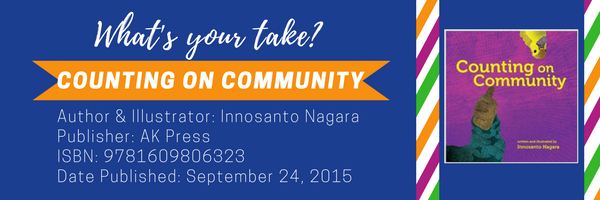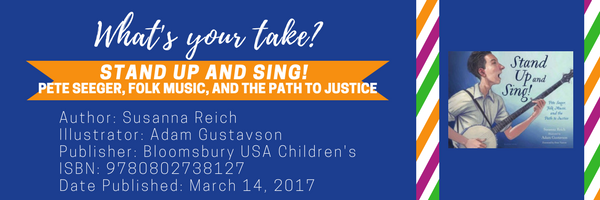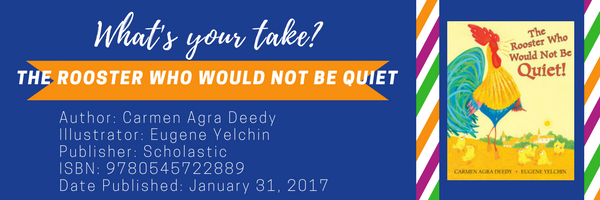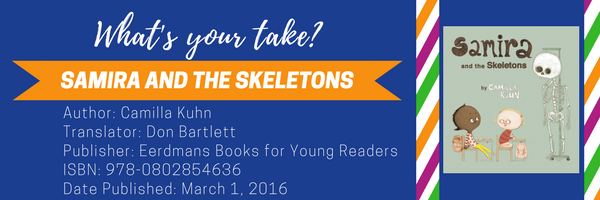We continue our conversation about the portrayal of emotional and behavioral disabilities in picturebooks, specifically characters who wrestle with childhood depression, anxiety, and outbursts. In the first three weeks, we looked at The Red Tree, Virginia Wolf, and Jack’s Worry. This week Maria and Megan take on The Snurtch by Sean Ferrell and Charles Santoso.
Books & Resources


MTYT: Jack’s Worry
We continue our conversation about the portrayal of emotional and behavioral disabilities in picturebooks, specifically characters who wrestle with childhood depression, anxiety, and outbursts. In weeks one and two, we looked at The Red Tree and Virginia Wolf. This week, we offer our take on Jack’s Worry by Sam Zuppardi.

MTYT: Virginia Wolf
We continue our conversation about the portrayal of emotional and behavioral disabilities in picturebooks, specifically characters who wrestle with childhood depression, anxiety, and outbursts. Last week, we looked at The Red Tree. This week, we offer our take on Virginia Wolf by Kyo Maclear and Isabelle Arsenault.

MTYT: The Red Tree

This month we are continuing our conversation about the portrayal of disabilities in picturebooks (see August 2016 and February 2017). Our focus in the following discussions is on emotional and behavioral disabilities, so we will look at characters who wrestle with childhood depression, anxiety, and outbursts. The books we discussed last August and February won the Schneider Family Award for the Portrayal of the Disability Experience. The titles discussed this month, beginning with The Red Tree, have not won that award, but they could have!

MTYT: Mama’s Nightingale
This post continues June’s My Take/Your Take conversation around books that highlight multiple forms of protest and the power of voice for younger readers. This week Dorea and Lauren consider Mama’s Nightingale: A Story of Immigration and Separation by Edwidge Danticat with illustrations by Leslie Staub and how it relates to children’s perspectives of their own stories. Scroll to the bottom of this post for links to the first three posts in this conversation.

MTYT: Counting on Community
This post continues June’s My Take/Your Take conversation around books that highlight multiple forms of protest and the power of voice for younger readers. The conversation starts with The Rooster Who Would Not Be Quiet!, continues with Stand Up and Sing! Pete Seeger, Folk Music, and the Path to Justice by Susanna Reich and Adam Gustavson and now features Counting on Community. This week Dorea and Lauren consider the power of voice.

MTYT: Stand Up and Sing!
This post continues June’s My Take/Your Take conversation around books that highlight multiple forms of protest and the power of voice for younger readers. The conversation started with The Rooster Who Would Not Be Quiet! and continues with Stand Up and Sing! Pete Seeger, Folk Music, and the Path to Justice by Susanna Reich and Adam Gustavson. This week Dorea and Lauren consider folk music and the path to justice.

MTYT: The Rooster Who Would Not Be Quiet
 The recent presidential election in the U.S. brought forth many strong feelings and various reactions. As early childhood teacher educators, elementary teachers and mothers of young children, we are interested in exploring a set of books that highlight multiple forms of protest and the power of voice for some of our younger readers. Dorea Kleker and Lauren Pangle begin with their take on The Rooster Who Would Not Be Quiet! by Carmen Agra Deedy and illustrated by Eugene Yelchin.
The recent presidential election in the U.S. brought forth many strong feelings and various reactions. As early childhood teacher educators, elementary teachers and mothers of young children, we are interested in exploring a set of books that highlight multiple forms of protest and the power of voice for some of our younger readers. Dorea Kleker and Lauren Pangle begin with their take on The Rooster Who Would Not Be Quiet! by Carmen Agra Deedy and illustrated by Eugene Yelchin.

MTYT: Duck, Death and the Tulip
Compiled by Janelle Mathis
The last My Take/Your Take for April continues with a focus on picture books. For the students involved, part of a doctoral class on critical content and visual analysis of international literature, many picture books became unique points of discussion. In light of the recent 2017 recipient of the Astrid Lindgren Memorial Award, German author/illustrator Wolf Erlbruch, we read Duck, Death and the Tulip (2011) as well as other books by Erlbruch and some scholarly perspectives.

MTYT: Samira and the Skeletons
Compiled by Janelle Mathis
This installment of April’s My Take/Your Take focuses on responses to a title that is on the USBBY 2017 “Outstanding International Book” List. Bill Visco, a doctoral student and high school English teacher, and April Walker, a doctoral student and elementary teacher with a focus in Language Arts and Social Studies, share their responses to Samira and the Skeletons (2016) written by Camilla Kuhn and published by Eerdmans Books for Young Readers. This book was translated from Norwegian by Don Bartlett and humorously shares the story of a child who is obsessed with seeing everyone as walking skeletons after a lesson in school about skeletons.

